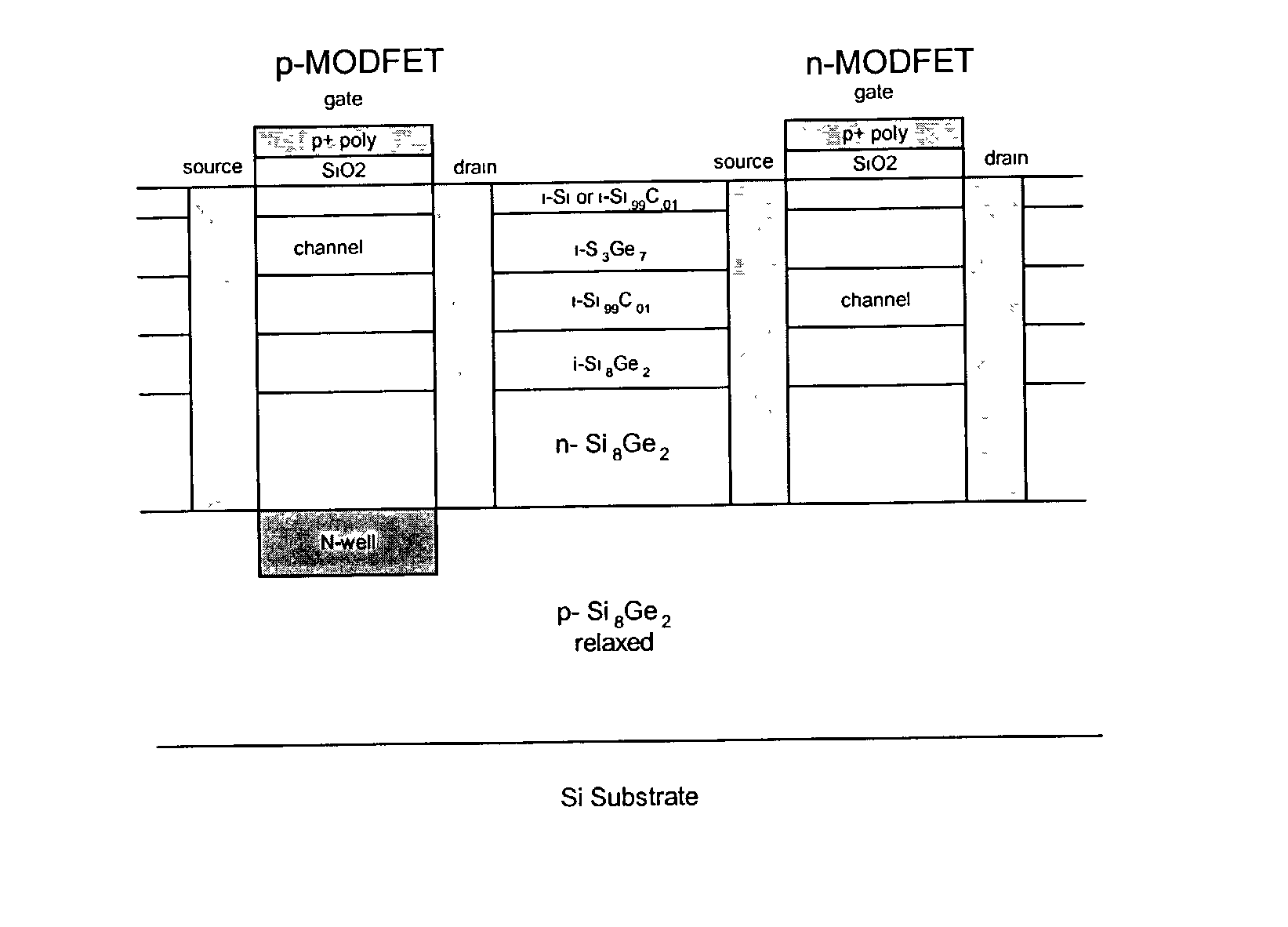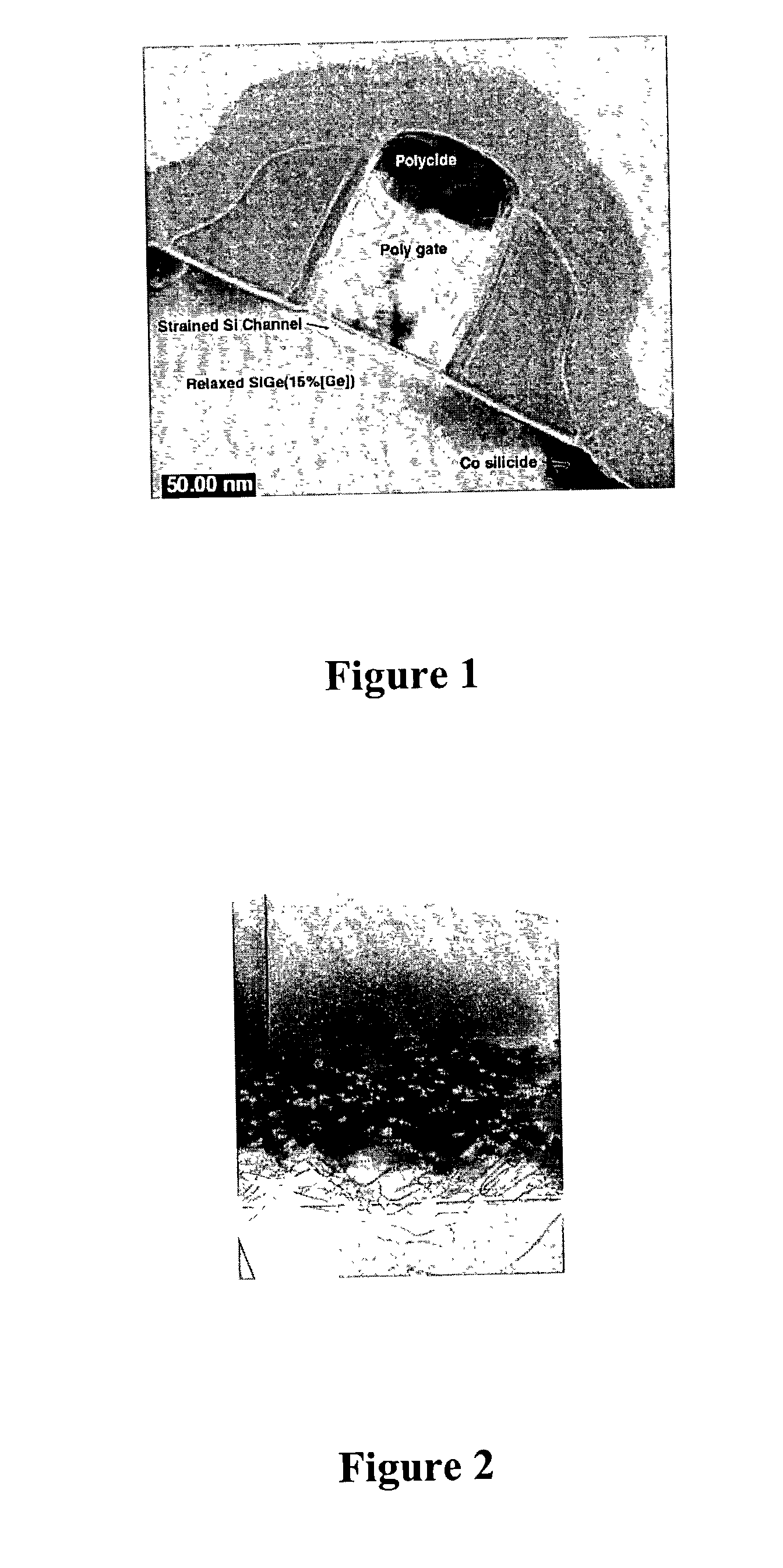Heterojunction field effect transistors using silicon-germanium and silicon-carbon alloys
a technology of hexagonal junction and transistor, which is applied in the direction of transistors, electrical devices, semiconductor devices, etc., can solve the problems of forming defects, and reducing the scalability of cmos transistors at sufficient thickness of ge-containing layers,
- Summary
- Abstract
- Description
- Claims
- Application Information
AI Technical Summary
Benefits of technology
Problems solved by technology
Method used
Image
Examples
example
[0061] In an illustrative embodiment, a relaxed buffer layer having a composition of Si.sub.xGe.sub.1-x is grown on a silicon wafer substrate by chemical vapor deposition using dichlorosilane as the silicon precursor and germane as the germanium precursor, at a flow rate to the CVD chamber of 20 standard liters per minute of hydrogen, 200 standard milliliters per minute of dichlorosilane and a flow rate of 10% germane in hydrogen that varies during the growth cycle (0 to 300 standard milliliters per minute). The growth conditions include a temperature of 800.degree. C., and a pressure of 20 torr. Defect density in the near-surface region of the wafer is reduced by compositional grading, which may be combined with thermal annealing cycles. The temperature is reduced to approximately 580.degree. C., and a layer of Si.99C.01 is grown with the following reactor gas flow rates: 100 standard milliliters of silane, 10 standard liters of Hydrogen, and 85 standard milliters of methyl silane....
PUM
| Property | Measurement | Unit |
|---|---|---|
| thickness | aaaaa | aaaaa |
| thickness | aaaaa | aaaaa |
| thickness | aaaaa | aaaaa |
Abstract
Description
Claims
Application Information
 Login to View More
Login to View More - R&D
- Intellectual Property
- Life Sciences
- Materials
- Tech Scout
- Unparalleled Data Quality
- Higher Quality Content
- 60% Fewer Hallucinations
Browse by: Latest US Patents, China's latest patents, Technical Efficacy Thesaurus, Application Domain, Technology Topic, Popular Technical Reports.
© 2025 PatSnap. All rights reserved.Legal|Privacy policy|Modern Slavery Act Transparency Statement|Sitemap|About US| Contact US: help@patsnap.com



